Managing land and livestock encompasses the art and science of our interconnected relationships with nature.
Working with Nature at the Foundational Level
08/22/2024
By: Mark Biaggi
Photos by: Mark Biaggi
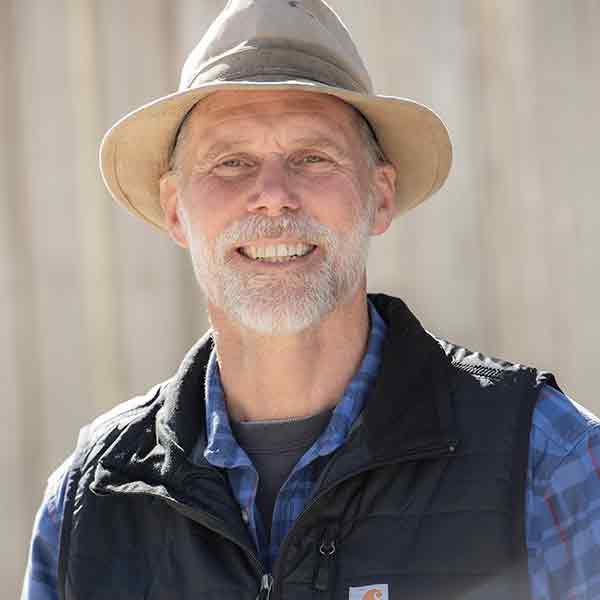 Managing land and livestock encompasses the art and science of our interconnected relationships with nature. We have the power to decide whether we are extracting, dominating, maintaining, or enhancing the land. With regenerative agriculture, our intention is not just to maintain land health, it is to enhance it, which entails a holistic approach that includes observing the land, making good decisions based on context and goals, and then observing the results assuming we might have missed things that still need tending.
Managing land and livestock encompasses the art and science of our interconnected relationships with nature. We have the power to decide whether we are extracting, dominating, maintaining, or enhancing the land. With regenerative agriculture, our intention is not just to maintain land health, it is to enhance it, which entails a holistic approach that includes observing the land, making good decisions based on context and goals, and then observing the results assuming we might have missed things that still need tending.
On a cool maritime morning in July, I am moving cattle to a fresh pasture at TomKat Ranch. As I cross the pasture, I take the time to observe the life cycles—a key practice of regenerative agriculture. What follows are photographs from my observations:
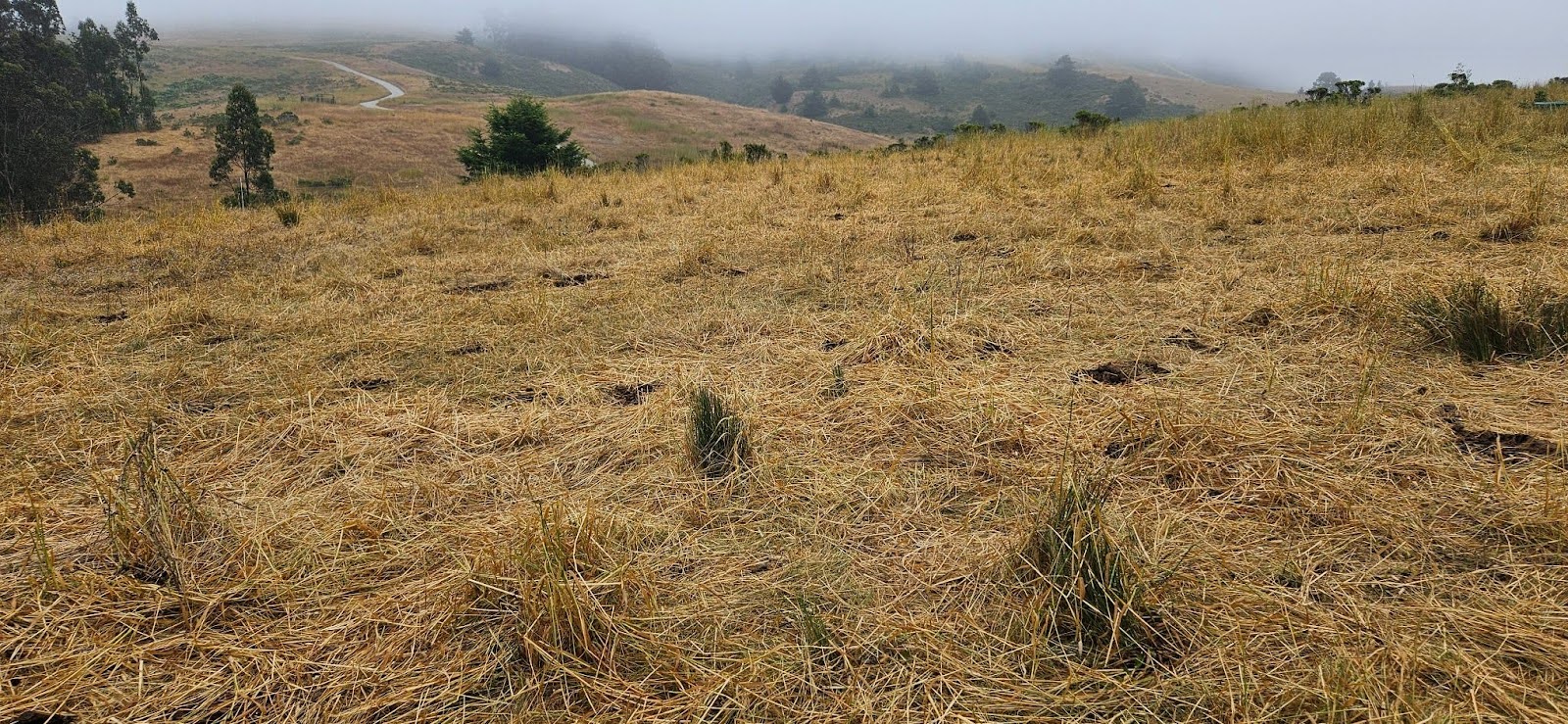
First, I see effectively grazed pasture where the grasses are grazed or trampled to cycle carbon, minerals, and nutrients to protect the soil microbial life from ultraviolet rays and drying out. I see no bare soil and numerous dung piles (dark spots) that will feed the invertebrates and soil biology.
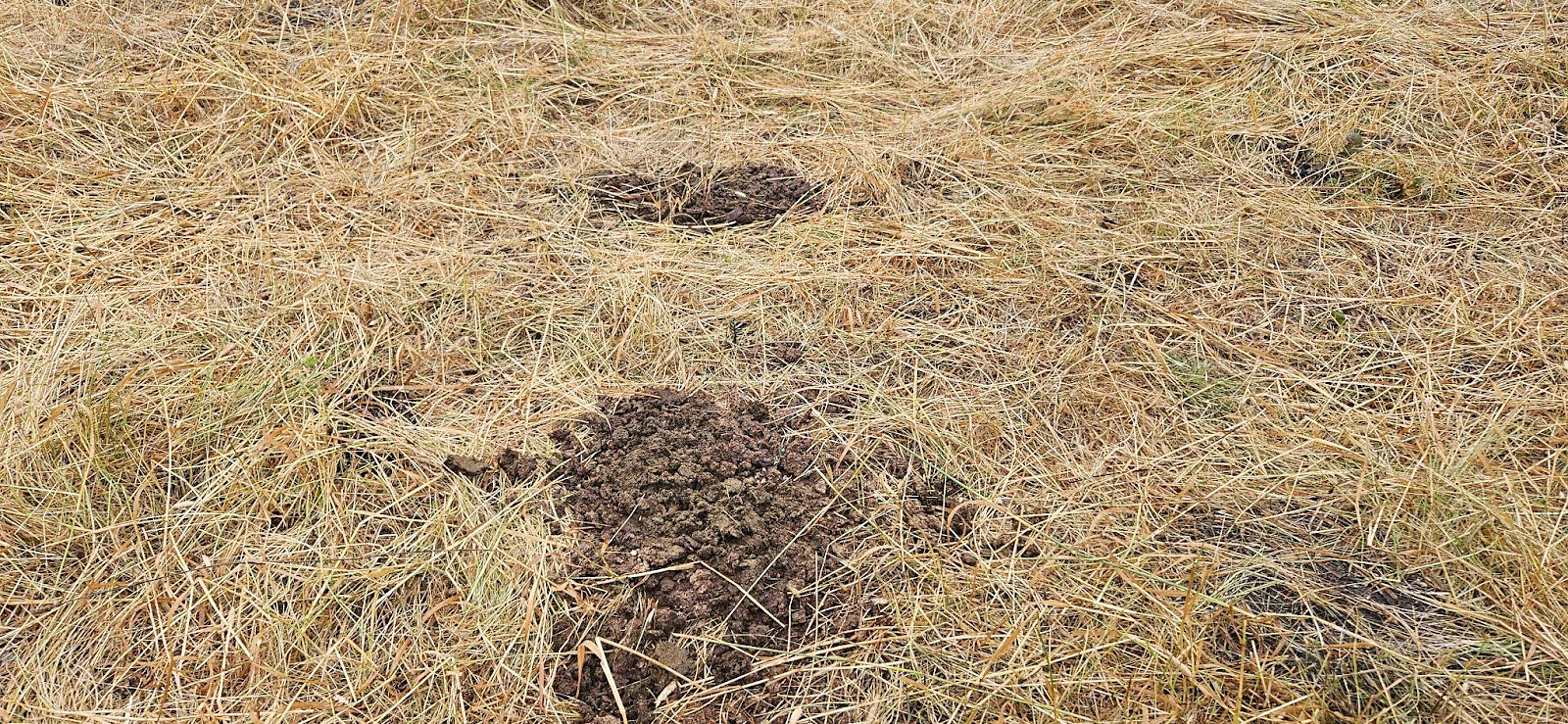
As I continue to walk, I notice dung piles that are more than 3 days old are highly disturbed by someone. I suspect this is bird activity as birds love to feed on the insects in the piles.
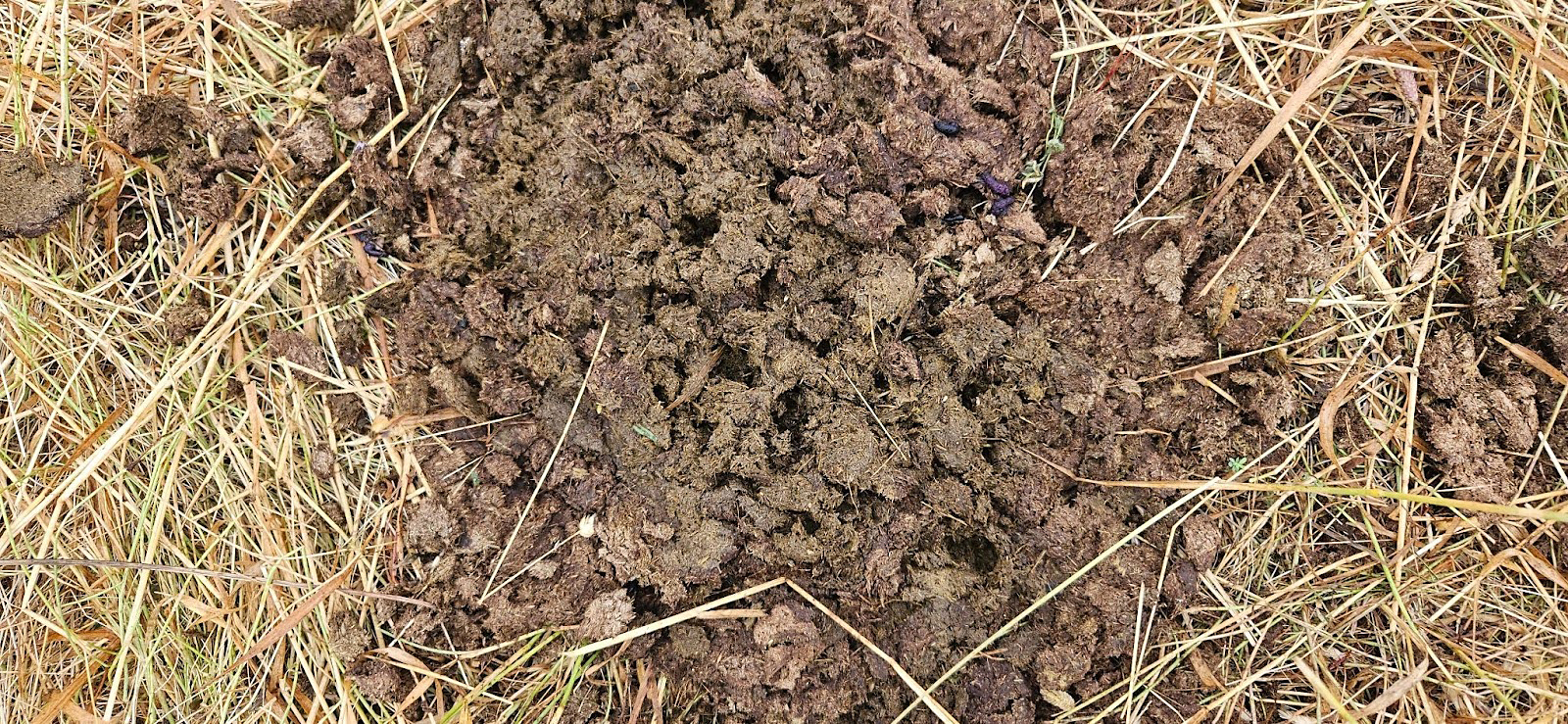
Disturbed dung piles (from cows in this instance) can have tremendous value for the land. If moist, their ingredients include nutrients, minerals, and biology that feed the soil microbes. They can also be a breeding ground for flies and parasites if moist. However, the dung piles documented in these photos are dry, creating an inhospitable environment for flies and parasites. What has created this environment? And what does this dryness mean?
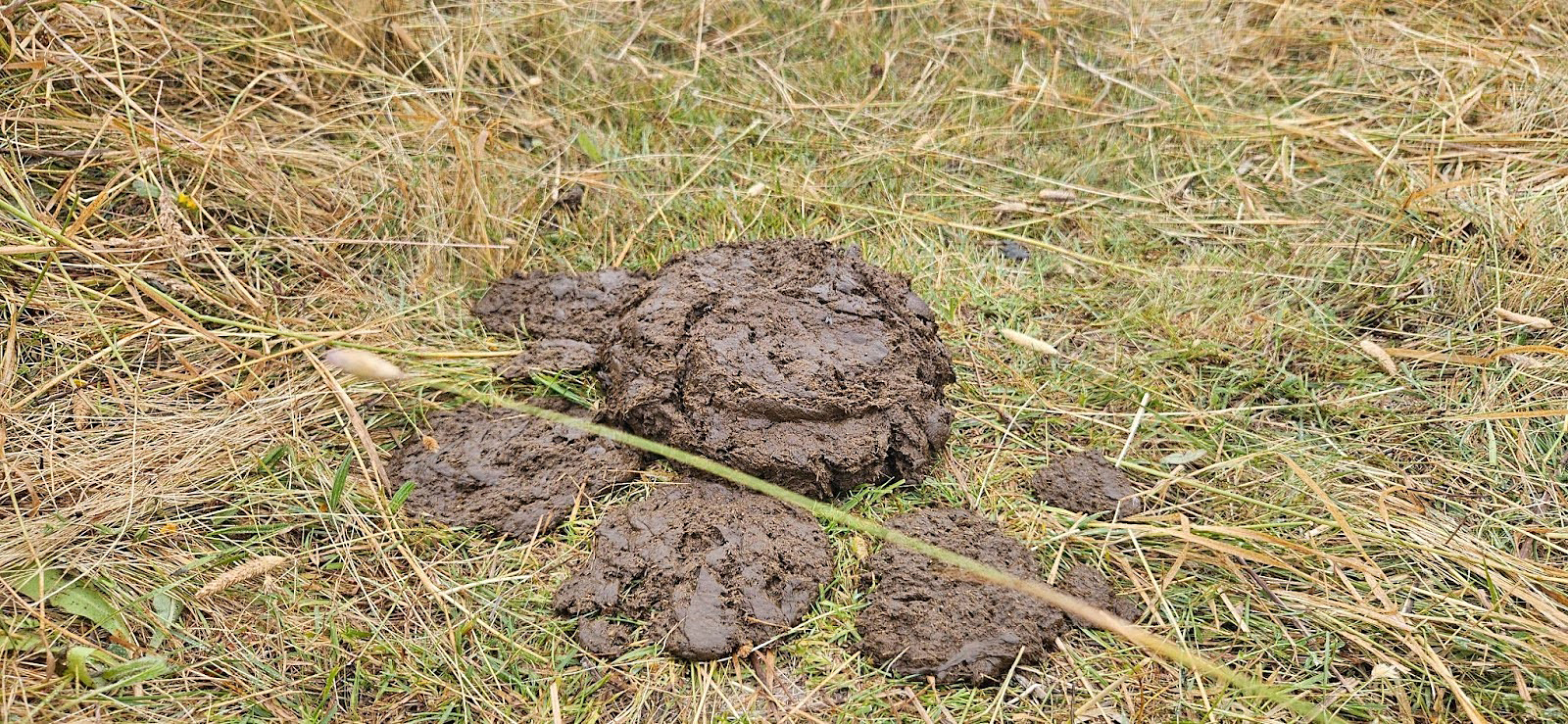
Every time an animal moves across the land it leaves a trail. I start at the pasture grazed yesterday and work backwards. As compared to my earlier findings, I see moist dung from where the herd was bedding down just a few hours old.
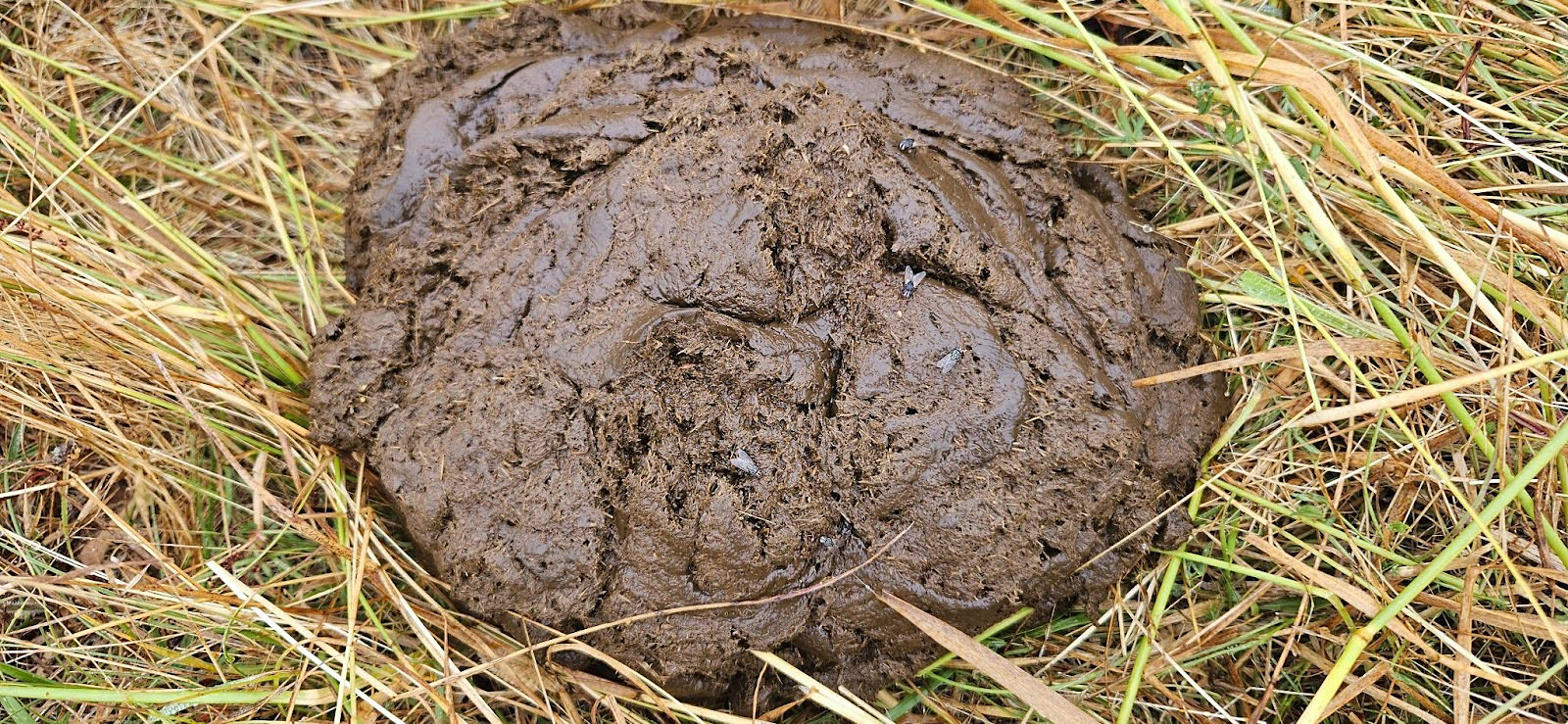
Upon close inspection, flies have arrived on the fresh dung to lay their eggs.
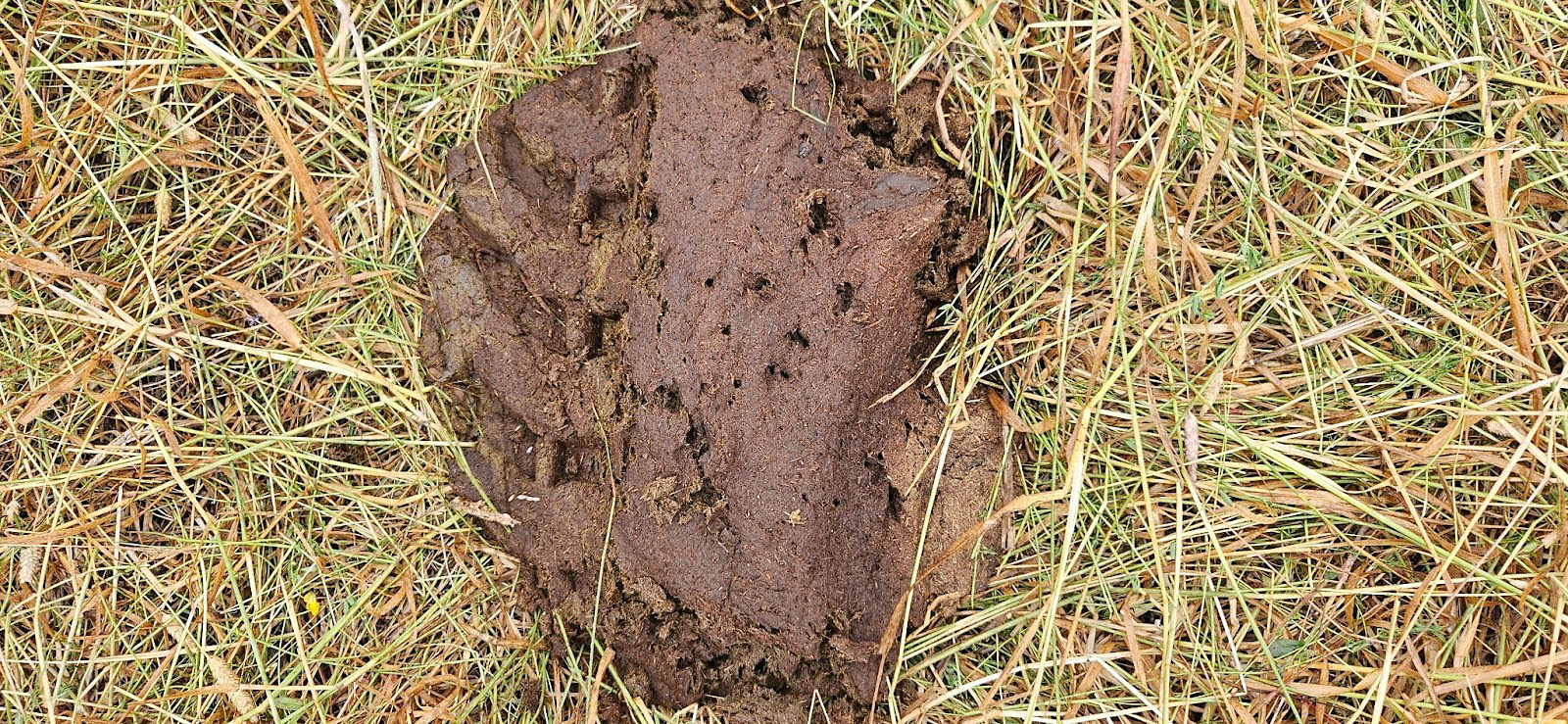
Here we see dung from the previous day containing large holes. I suspect these are from dung beetles.
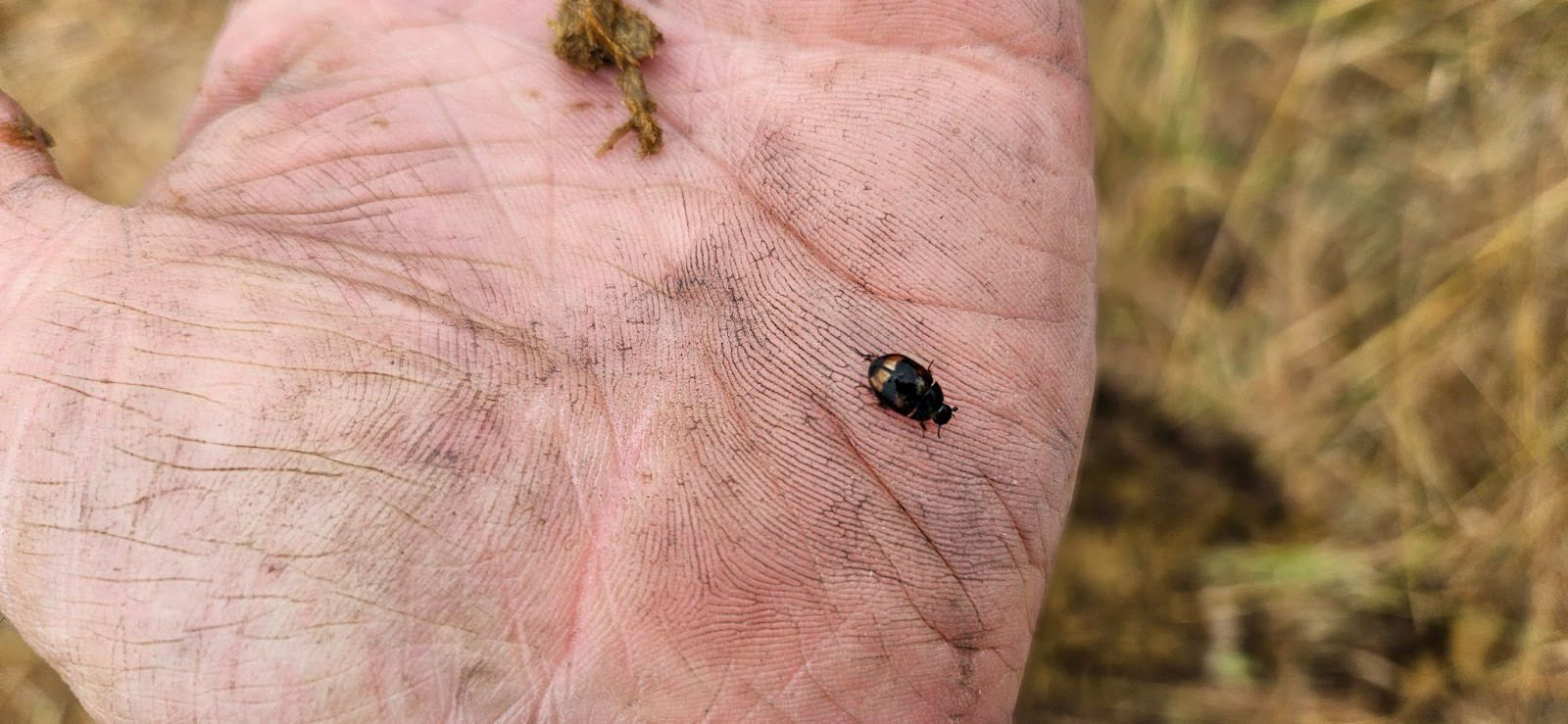
Digging through the dung I find our tiny insect friends hard at work. They quickly scurry for cover when they are discovered. Can’t blame them—given the propensity for birds to eat insects, the beetle co-evolved with flocks of birds. Why am I excited to see Dung Beetles? There are So Many Reasons To Like Dung Beetles!
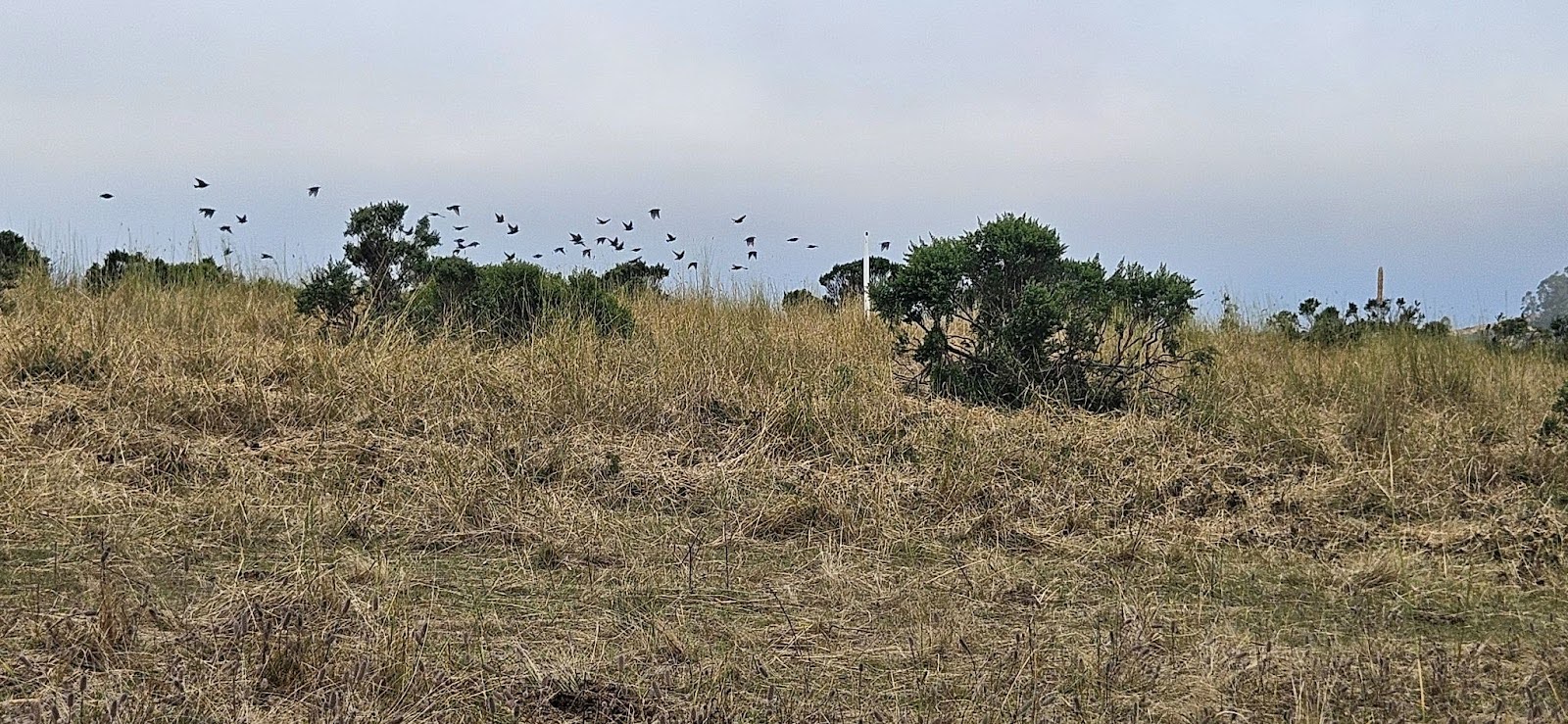
I returned early the next day to confirm that the birds were foraging at the dung piles. I disturbed the flock so I was unable to get a photo of them on the dung. Each time I approached them, they fled the grass and shifted; to them, I am a predator.
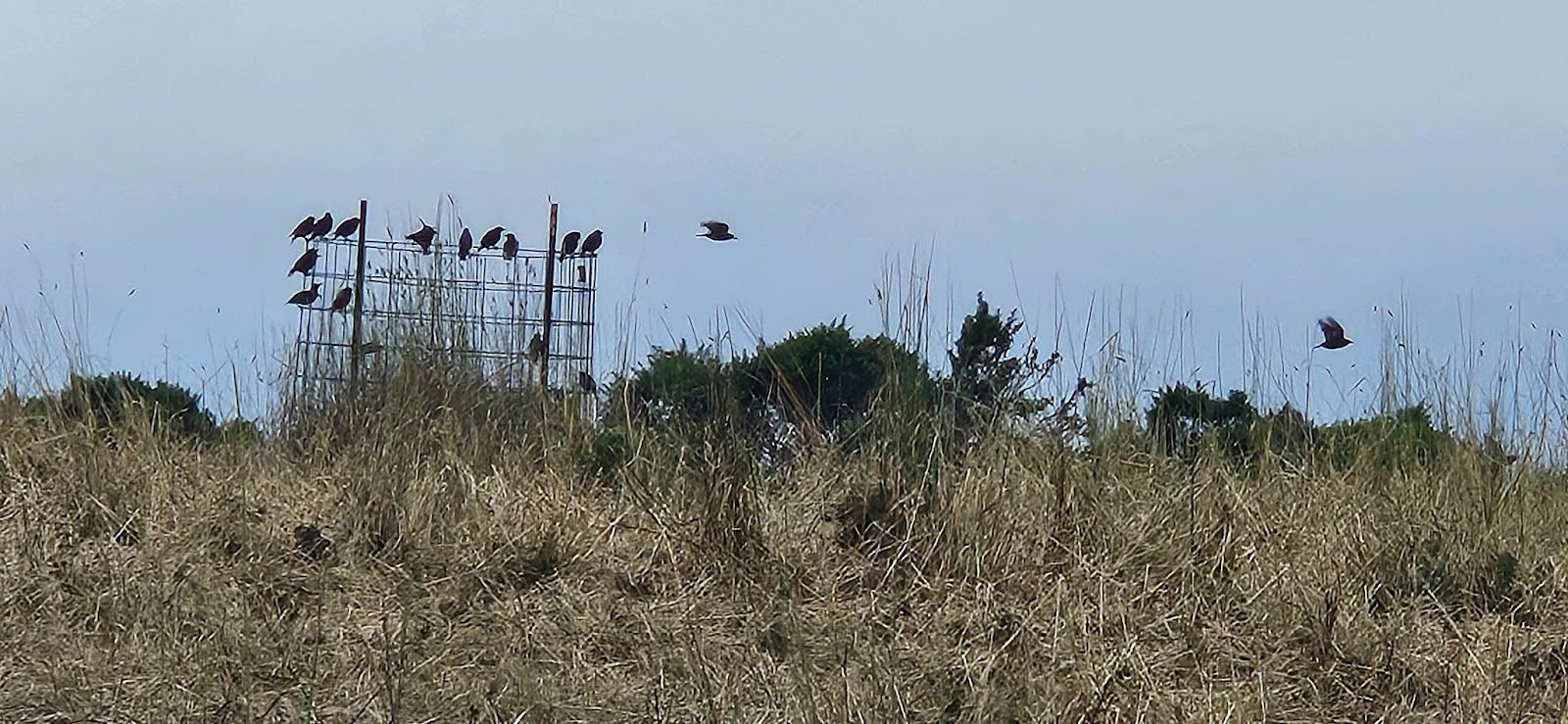
Some of the flock eventually settled on perches to wait me out. They are here for a reason: Nature has no landfills, no waste, only byproducts. Cow manure is the byproduct of grazing animals converting forage full of carbon and nutrients into feed. If not grazed, forage oxidizes and releases carbon into the atmosphere. This is the way grazing plays a key role in the cycle of events in which plants, animals, invertebrates, microbes, etc. co-evolved. The flies and parasites that the birds eat are part of the evolutionary process as well.
The dung beetles move in immediately and utilize the dung incorporating it into the soil to feed their young and the soil microbiology as well as aerate the soil via tunnels they dig (which also improves water infiltration). Adults feed on juices in the cow dung thus drying out the dung and decreasing the conditions for flies and parasites. Then birds move in to feed at the dung piles approximately 3 days later as the surviving fly eggs hatch. Fly larvae are a great source of protein for birds!
As land managers, we have the power to decide whether we are extracting, dominating, maintaining, or enhancing the land. Do we choose to work with nature, or do we dominate and control? We could have chosen to use chemicals to kill the flies and parasites but this would have had a negative cascading impact on the dung beetle population, soil microbial life, water infiltration and holding capacity, and the soil’s ability to cycle minerals, carbon, and nutrients. This would have ultimately deprived the birds of a rich source of protein.
Regenerative land management, at the foundational level, utilizes the tool of domestic livestock and the practice of adaptive grazing to rebuild healthy cycles of water, mineral, energy, and community dynamics on the landscape.